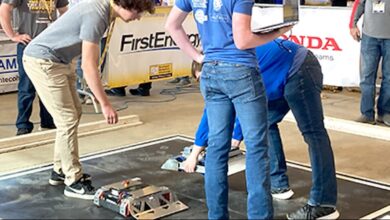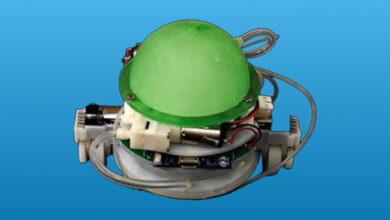Artificial Intelligence (AI) Robots Are a $38 Billion Market, According to Goldman Sachs. Here’s How the “Magnificent Seven” Are Investing in the Technology.

One area emerging as a popular theme in the AI space is robotics.
Robotics is an emerging trend in the artificial intelligence (AI) landscape. Technology companies are leveraging robotics to enhance operations related to warehouse logistics, manufacturing, and more.
Earlier this year, investment bank Goldman Sachs published a report in which it forecast the addressable market for humanoid robots reaching $38 billion by 2035. The interesting part? A year prior, Goldman had initially forecast a market size of $6 billion.
As breakthroughs in AI continue at a fast pace, it’s not entirely surprising to see such a dramatic increase in projections for a growing market.
Let’s break down how businesses are integrating robotics into their operations and assess which opportunities may be best for investors looking for some exposure to this area of the AI realm.
What are robotics used for?
There are many different use cases for robotics. Some of the most common applications include robots in warehouses and fulfillment centers.
However, many companies are aggressively pursuing the technology to disrupt the labor force. In the long run, some businesses believe that robotics can assist or even replace human workers in various settings.
For example, humanoid robots can be trained to assist with mundane or administrative tasks such as household chores. These bots could also learn to perform more sophisticated jobs in potentially dangerous environments.
Image source: Getty Images.
What companies are investing in robotics?
Two of the earliest pioneers of robotics are e-commerce specialists Alibaba and Amazon (AMZN -1.64%). Both companies leverage robotics in their warehouses. Essentially, complementing human labor with robots can lead to efficiencies in fulfillment centers. Given the volume of orders that Alibaba and Amazon digest on a daily basis, warehouse automation can lead to significant financial benefits at scale.
Another company that is heavily investing in humanoid robotics is Tesla (TSLA 12.06%). The company has been open about its ambitions in robotics, and how the technology can enhance its manufacturing capabilities.
The long-term plan is to implement Tesla’s bots, dubbed Optimus, into the company’s factories. Specifically, Tesla is looking to facilitate human workers along the assembly line for its vehicles. Given the use cases explored so far, it’s clear that robotics could lead to a major paradigm shift in the labor market.
Investors might be keen to know that Tesla is far from the only company investing in humanoid bots. Indeed, earlier this year Nvidia (NVDA -3.33%), Microsoft (MSFT 0.37%), Intel, and OpenAI each participated in a $675 million funding round for a robotics start-up, called Figure AI.
Interestingly, this was not OpenAI‘s first investment in the humanoid robotics space. The ChatGPT developer is also an investor in Norway-based X1, which is developing android bots.
Figure AI’s mission is to integrate robotics across the $42 trillion labor market, including manual labor environments as well as households and even elder care.
Is robotics a good opportunity for you?
I think the most prudent way to acquire some exposure to AI robots is to invest in companies that are not overly reliant on the technology. In other words, I’d choose to invest in businesses that are already diversified — and for whom robotics is simply one aspect of the growth roadmap.
Nvidia, Microsoft, Tesla, and Amazon are all solid examples. In addition to e-commerce, Amazon has a gigantic cloud computing operation and a fast-growing advertising business. Nvidia is primarily a chip and data center business today, but the company is also making impressive strides in enterprise software.
Moreover, Microsoft’s ecosystem spans personal computing, cloud infrastructure, gaming, social media, and more. Lastly, Tesla is a leader in electric vehicles (EVs) and green energy services.
I think each of those companies offers investors a variety of growth opportunities, many of which will touch AI in the long run. I see robotics as an intriguing aspect of the overall artificial intelligence narrative. However, the technology itself is still early in its development.
While I think the long-term potential of robotics could be massive, it’s still a relatively speculative investment. Instead, exploring opportunities in the broader AI space may be the optimal strategy to invest in robotics, while also gaining exposure to other growth areas beyond the technology.
John Mackey, former CEO of Whole Foods Market, an Amazon subsidiary, is a member of The Motley Fool’s board of directors. Adam Spatacco has positions in Amazon, Microsoft, Nvidia, and Tesla. The Motley Fool has positions in and recommends Amazon, Goldman Sachs Group, Microsoft, Nvidia, and Tesla. The Motley Fool recommends Alibaba Group and Intel and recommends the following options: long January 2025 $45 calls on Intel, long January 2026 $395 calls on Microsoft, short January 2026 $405 calls on Microsoft, and short May 2024 $47 calls on Intel. The Motley Fool has a disclosure policy.



